The OECD biosafety consensus documents identify elements of scientific information used in the environmental safety and risk assessment of transgenic organisms which are common to OECD member countries and some non-members associated with the work. This is intended to encourage information sharing, promote harmonised practices, and prevent duplication of effort among countries.
Content by Volume
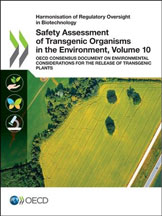 |
Volume 10, 2023
- Environmental considerations for risk/safety assessment for the release of transgenic plants
- Annexes
- Invasiveness and Weediness
- Vertical Gene Flow
- Organisms (Animals)
- Soil Functions
- Plant Health
- Crop Management Practices
- Biodiversity (Protected Species and Habitats/Ecosystems
|
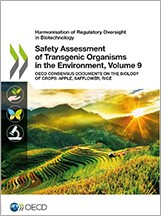 |
Volume 9, 2022
- Facilitating harmonisation
- Revised points to consider on plant biology consensus documents
- Biology of crops
- Apple (Malus domestica)
- Safflower (Carthamus tinctorius)
- Rice (Oryza sativa)zz
|
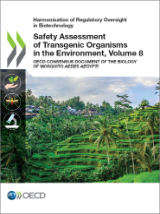 |
Volume 8, 2018
- Biology of Mosquito Aedes aegypt
- Taxonomy, description and distribution of the mosquito Ae. aegypti
- Reproductive biology of the mosquito Ae. aegypti
- Genetics of the mosquito Ae. aegypti
- Ecology of the mosquito Ae. aegypti
- Control of the mosquito Ae. aegypti
- Human and animal health affected by mosquitoeszz
|
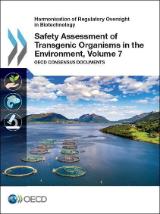 |
Volume 7, 2017
- Biology of crops
- Sorghum (Sorghum bicolor)
- Tomato (Solanum lycopersicum)
- Biology of animals
- Atlantic salmon (Salmo salar)
|
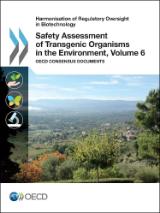 |
Volume 6, 2016
- Biology of crops
- Sugarcane (Saccharum spp.)
- Cassava (Manihot esculenta)
- Common bean (Phaseolus vulgaris)
- Cowpea (Vigna unguiculata)
- Eucalyptus (Eucalyptus spp.)
|
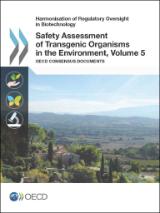 |
Volume 5, 2016
- Biology of crops
- Squashes, pumpkins, zucchinis and gourds (Cucurbita species)
- Brassica crops (Brassica species)
|
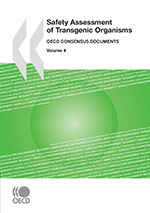 |
Volume 4, 2010
- Micro-organisms
- Cotton (Gossypium spp.)
- Bananas and plantains (Musa spp.)
- Micro-organisms
- Acinetobacter
- Use of taxonomy in risk assessment of micro-organisms: Bacteria
- Methods for detection of micro-organisms introduced into the environment: Bacteria
- Horizontal gene transfer between bacteria
|
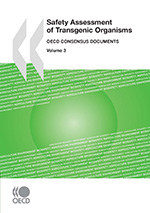 |
Volume 3, 2010
- Biology of trees
- White pine (Pinus monticola)
- Jack pine (Pinus banksiana)
- North American larches (Larix lyalli, Larix occidentalis, Larix laricina)
- Douglas-Fir (Pseudotsuga menziesii)
- Lodgepole pine (Pinus contorta)
- Black spruce (Picea mariana)
- Traits
- Safety information on transgenic plants expressing Bacillus thuringiensis–Derived insect control protein
- Facilitating harmonisation
- Guidance for designation of a unique identifier for transgenic plants
- Molecular characterization of plants derived from modern biotechnology
|
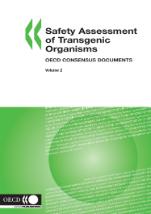 |
Volume 2, 2006
- Biology of trees
- Norway spruce (Picea abies)
- White spruce (Picea glauca)
- Sitka spruce (Picea sitchensis)
- Eastern white pine (Pinus strobus)
- Poplars (Populus spp.)
- Stone fruits (Prunus spp.)
- European white birch (Betula pendula)
- Micro-organisms
- Pseudomonas
- Acidithiobacillus
- Baculovirus
|
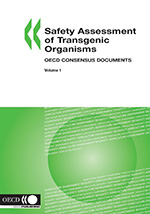 |
Volume 1, 2006
- Foreword to "Safety Assessment of Transgenic Organisms"
- Biology of crops
- Oilseed Rape (Brassica napus)
- Potato (Solanum tuberosum subs. Tuberosum)
- Wheat (Triticum aestivum)
- Rice (Oryza sativa) revised in 2022 (see Volume 9)
- Soybean (Glycine max)
- Sugar Beet (Beta vulgaris)
- Maize (Zea mays subs. mays)
- Sunflower (Helianthus annus)
- Papaya (Carica papaya)
- Oyster Mushroom (Pleurotus spp.)
- Chili, Hot & Sweet Peppers (Capsicum annuum)
- Traits
- Crop plants are made virus-resistant through coat protein gene-mediated protection
- Genes and their enzymes that confer tolerance to glyphosate herbicide
- Genes and their enzymes that confer tolerance to phosphinothricin herbicide
- Herbicide metabolism and the residues in glufosinate-ammonium (phosphinothricin) -tolerant transgenic plants
|
OECD work on biosafety
ENGAGE WITH US
Also AvailableEgalement disponible(s)









